


Passengers walk on a platform at Xi'an Railway Station in Xi'an, northwest China's Shaanxi Province, Feb. 15, 2023.
The 40-day Spring Festival travel rush, a mass migration marking the celebration of the Chinese New Year, officially ended on Wednesday, with more than 1.5 billion trips made by rail, highway, water and civil aviation. (Xinhua/Li Yibo)
BEIJING, Feb. 15 (Xinhua) -- The Spring Festival travel rush, which began on Jan. 7 this year, ended on Wednesday, with passenger traffic continuing to recover.
During the 40-day travel rush, more than 1.5 billion trips took place by rail, highway, water, and civil aviation, official data showed.
The country's railway passenger flow continued to rebound. Statistics showed that since Feb. 1, an average of more than 9 million passenger trips were made every day, and railway passenger transport has recovered to 90 percent of the figure for the 2019 corresponding travel rush period.
Road travel, as the first choice for short and medium-distance travel, was also favored during this year's travel rush.
Data from ride-hailing company Didi showed that from Jan. 7 to Feb. 14, Didi's ride-hailing and taxi orders continued to increase and recovered to more than 90 percent of the number for the same period of 2019.
The civil aviation sector also received more passengers during the Spring Festival holiday. In south China's Hainan Province, the Sanya civil aviation authority reported a new high of 3,024 flights in the week-long holiday, an increase of 5.8 percent over the same holiday period in 2019.
"China's railways, roads, waterways, and civil aviation have maintained stable operation, with sufficient transport capacity, orderly services, strong emergency support, and a generally secure environment," said Zhou Min, an official with the Ministry of Transport.
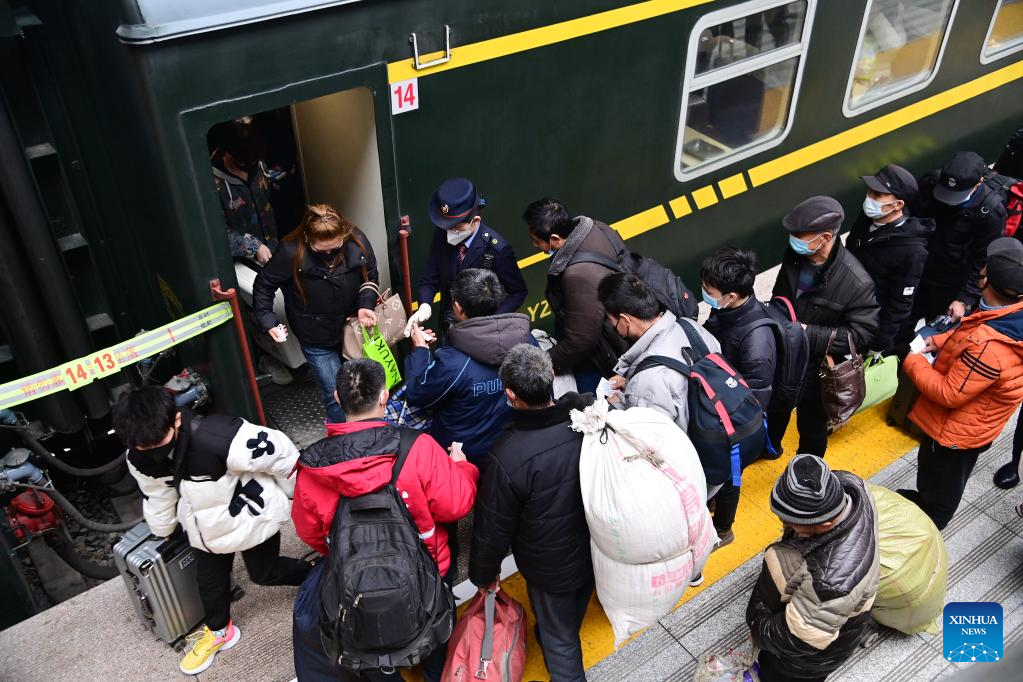
Passengers line up to board a train at Xi'an Railway Station in Xi'an, China's Shaanxi Province, Feb. 15, 2023.
The 40-day Spring Festival travel rush, a mass migration marking the celebration of the Chinese New Year, officially ended on Wednesday, with more than 1.5 billion trips made by rail, highway, water and civil aviation. (Xinhua/Li Yibo)
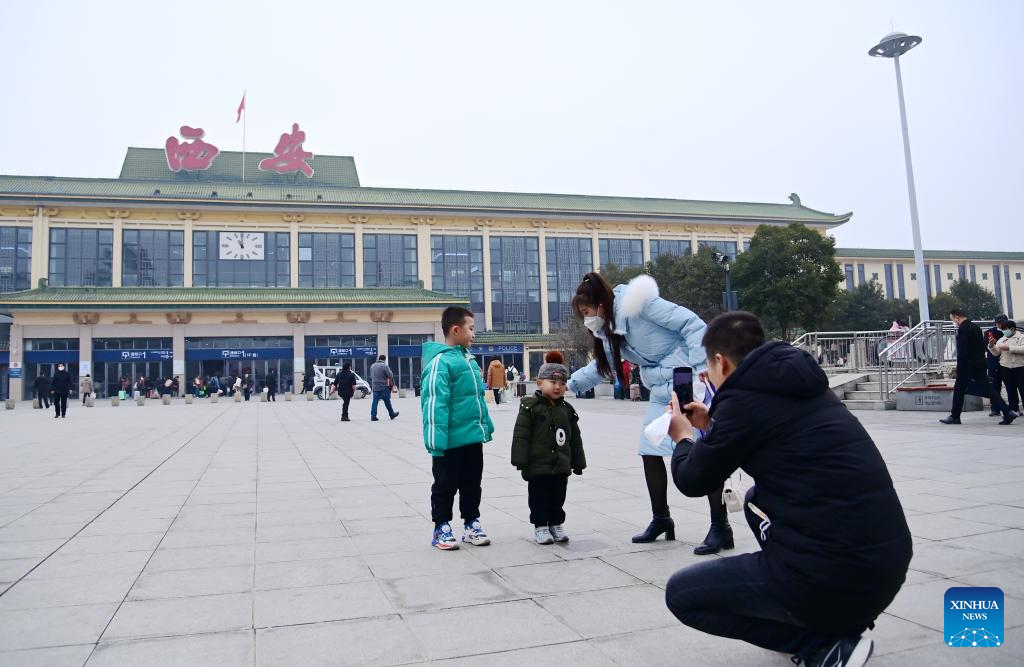
Children pose for photos in front of Xi'an Railway Station in Xi'an, capital of northwest China's Shaanxi Province, Feb. 15, 2023.
The 40-day Spring Festival travel rush, a mass migration marking the celebration of the Chinese New Year, officially ended on Wednesday, with more than 1.5 billion trips made by rail, highway, water and civil aviation. (Xinhua/Li Yibo)

Passengers walk on a platform at Xi'an Railway Station in Xi'an, northwest China's Shaanxi Province, Feb. 15, 2023.
The 40-day Spring Festival travel rush, a mass migration marking the celebration of the Chinese New Year, officially ended on Wednesday, with more than 1.5 billion trips made by rail, highway, water and civil aviation. (Xinhua/Li Yibo)
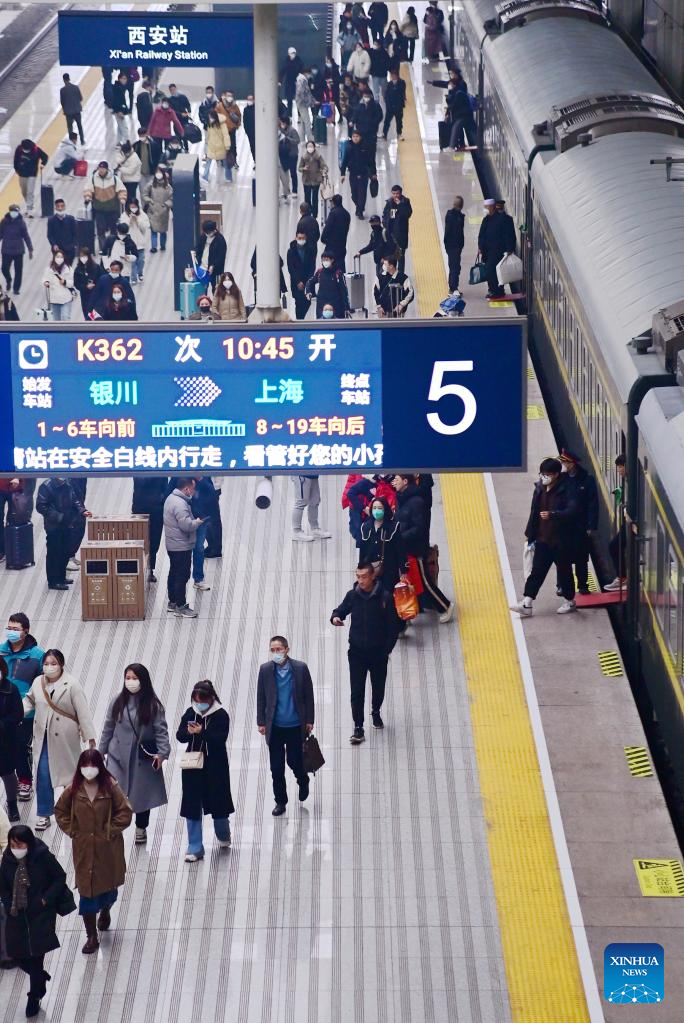
Passengers walk on a platform at Xi'an Railway Station in Xi'an, northwest China's Shaanxi Province, Feb. 15, 2023.
The 40-day Spring Festival travel rush, a mass migration marking the celebration of the Chinese New Year, officially ended on Wednesday, with more than 1.5 billion trips made by rail, highway, water and civil aviation. (Xinhua/Li Yibo)
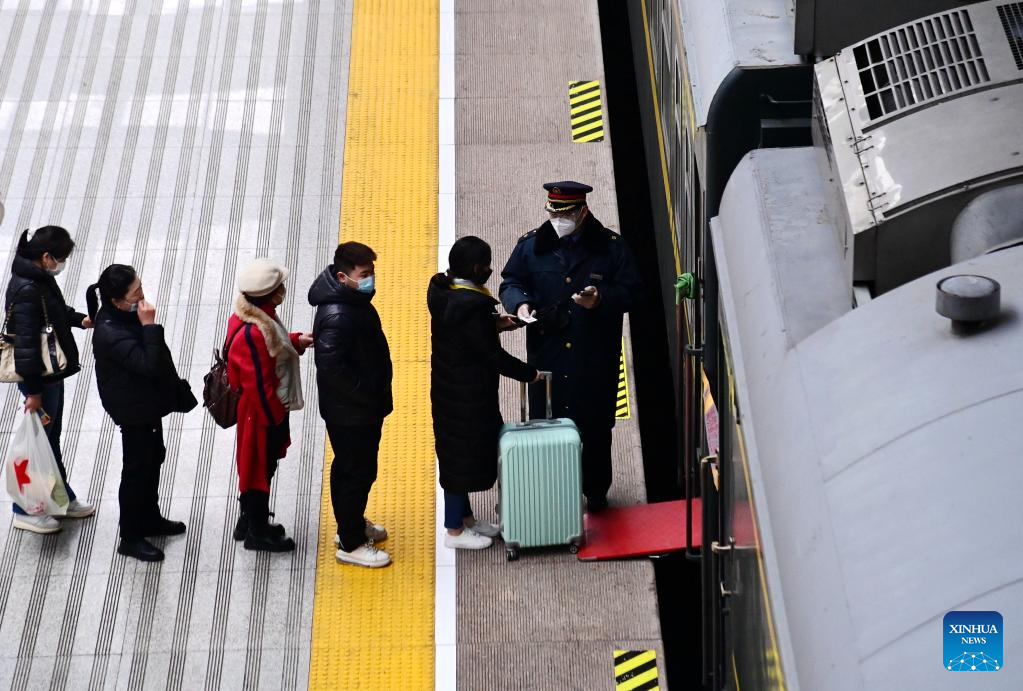
Passengers line up to board a train at Xi'an Railway Station in Xi'an, capital of northwest China's Shaanxi Province, Feb. 15, 2023.
The 40-day Spring Festival travel rush, a mass migration marking the celebration of the Chinese New Year, officially ended on Wednesday, with more than 1.5 billion trips made by rail, highway, water and civil aviation. (Xinhua/Li Yibo)
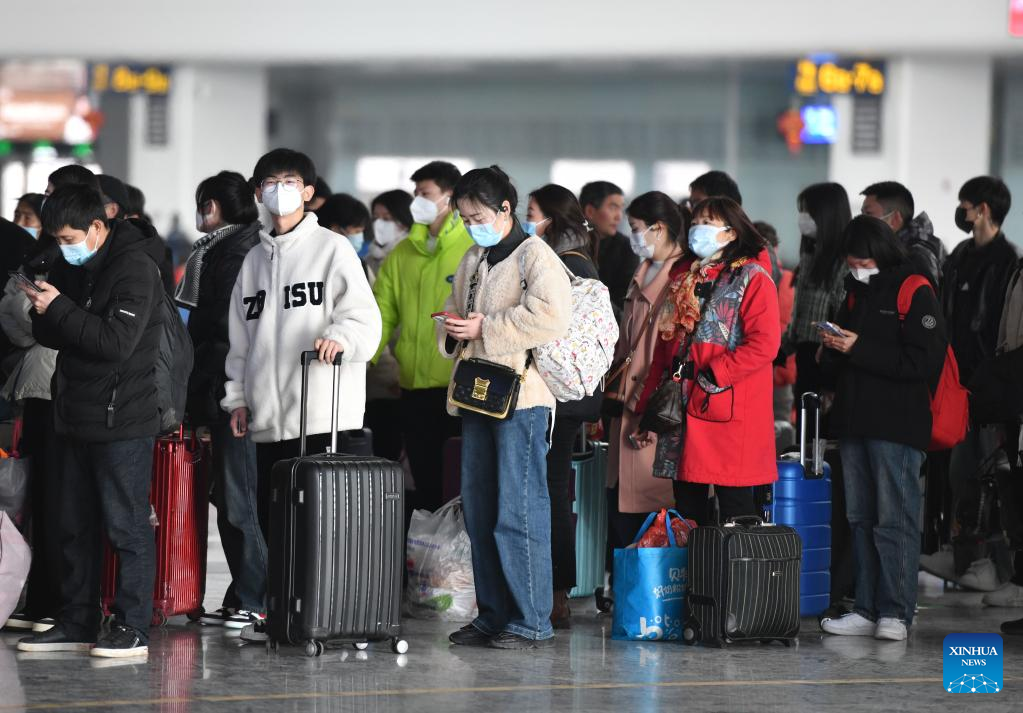
Passengers wait to get their tickets checked at Fuyang West Railway Station in Fuyang, east China's Anhui Province, Feb. 15, 2023.
The 40-day Spring Festival travel rush, a mass migration marking the celebration of the Chinese New Year, officially ended on Wednesday, with more than 1.5 billion trips made by rail, highway, water and civil aviation. (Photo by Lu Qijian/Xinhua)

Passengers walk on a platform at Nanjing Railway Station in Nanjing, east China's Jiangsu Province, Feb. 15, 2023.
The 40-day Spring Festival travel rush, a mass migration marking the celebration of the Chinese New Year, officially ended on Wednesday, with more than 1.5 billion trips made by rail, highway, water and civil aviation. (Photo by Su Yang/Xinhua)
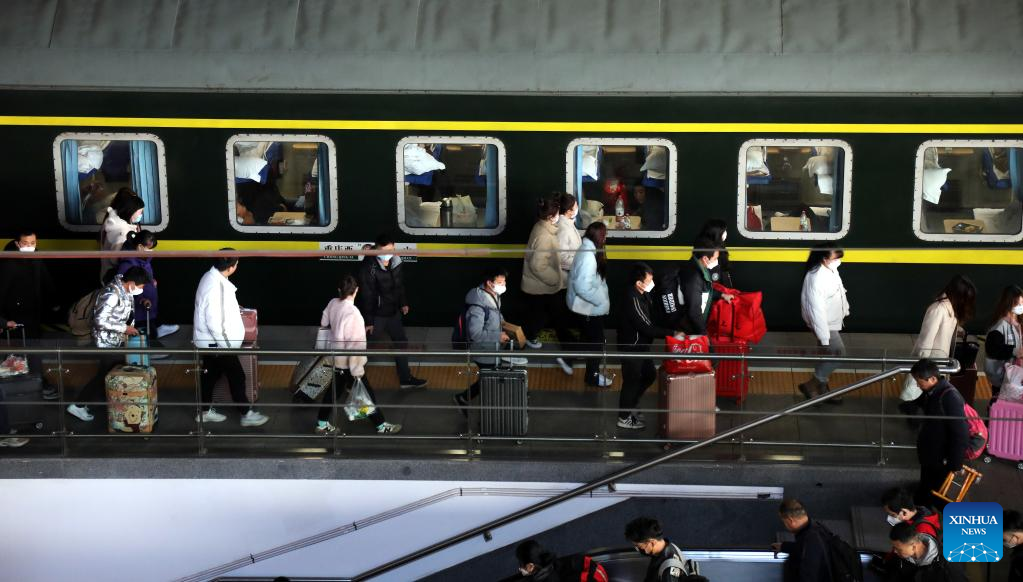
Passengers walk on a platform at Suzhou Railway Station in Suzhou, east China's Jiangsu Province, Feb. 15, 2023.
The 40-day Spring Festival travel rush, a mass migration marking the celebration of the Chinese New Year, officially ended on Wednesday, with more than 1.5 billion trips made by rail, highway, water and civil aviation. (Photo by Hang Xingwei/Xinhua)
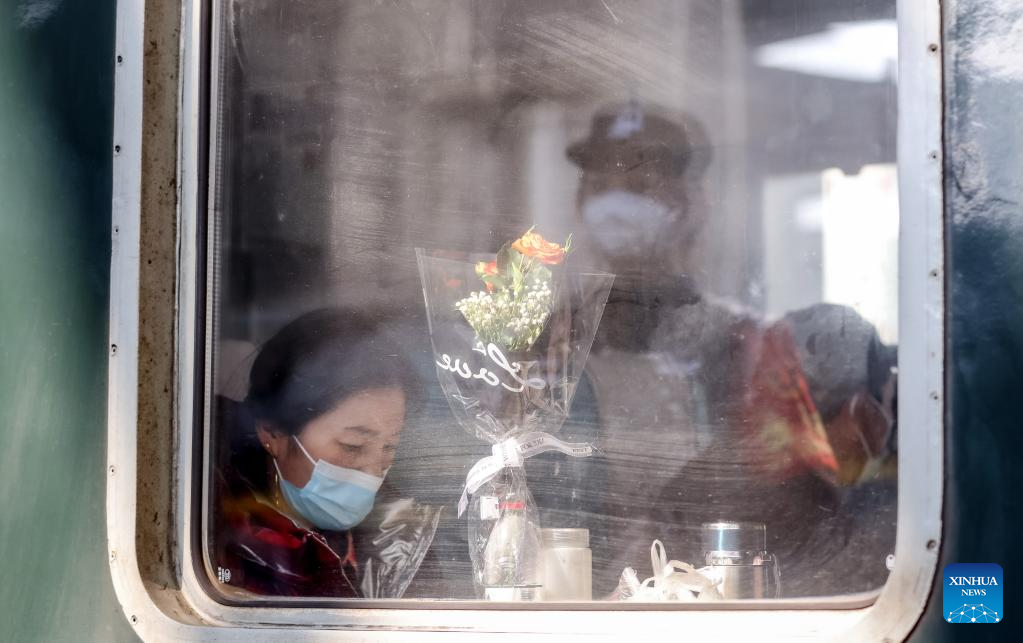
Passengers are aboard a train at Wuchang Railway Station in Wuchang, central China's Hubei Province, Feb. 15, 2023.
The 40-day Spring Festival travel rush, a mass migration marking the celebration of the Chinese New Year, officially ended on Wednesday, with more than 1.5 billion trips made by rail, highway, water and civil aviation. (Photo by Zhao Jun/Xinhua)
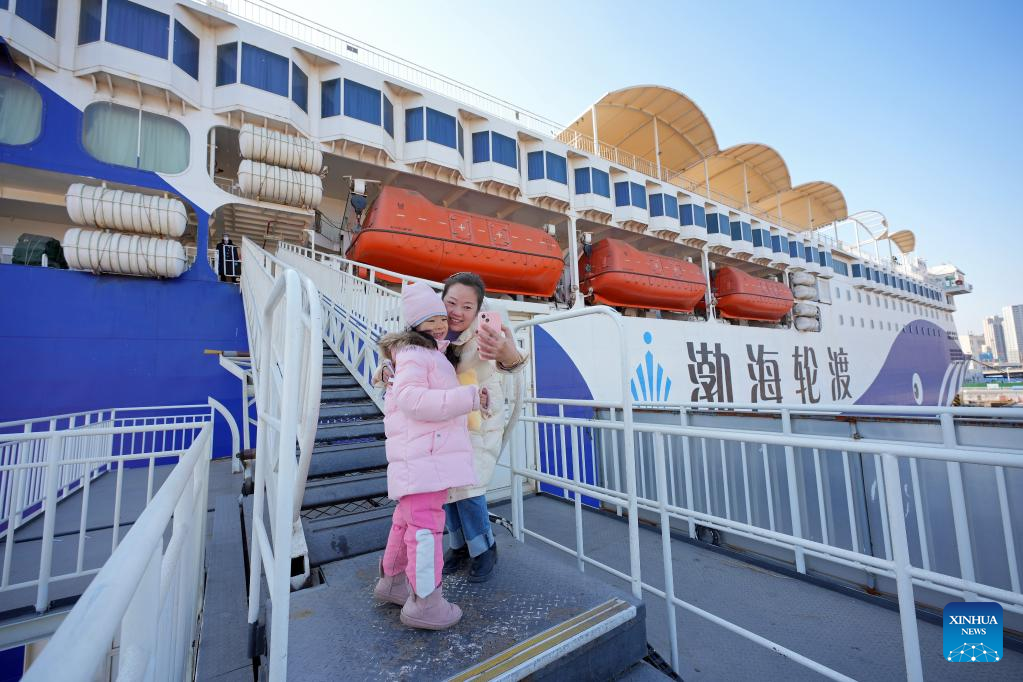
Passengers take a selfie before boarding a ship at Yantai Port in Yantai, east China's Shandong Province, Feb. 15, 2023.
The 40-day Spring Festival travel rush, a mass migration marking the celebration of the Chinese New Year, officially ended on Wednesday, with more than 1.5 billion trips made by rail, highway, water and civil aviation. (Photo by Tang Ke/Xinhua)
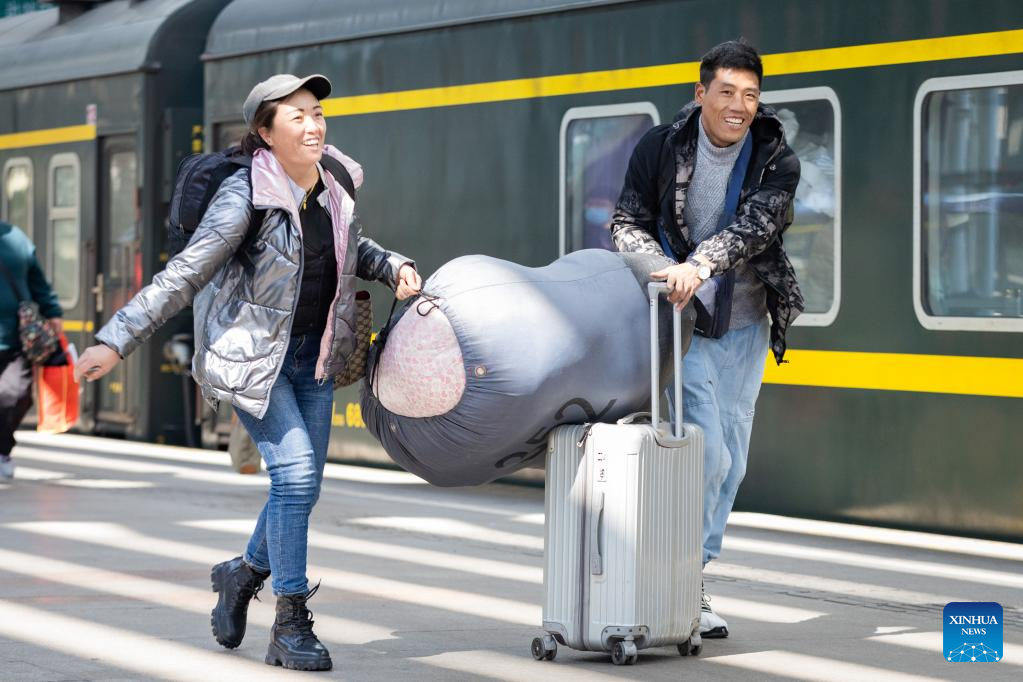
Passengers walk on a platform at Nanjing Railway Station in Nanjing, east China's Jiangsu Province, Feb. 15, 2023.
The 40-day Spring Festival travel rush, a mass migration marking the celebration of the Chinese New Year, officially ended on Wednesday, with more than 1.5 billion trips made by rail, highway, water and civil aviation. (Photo by Su Yang/Xinhua)
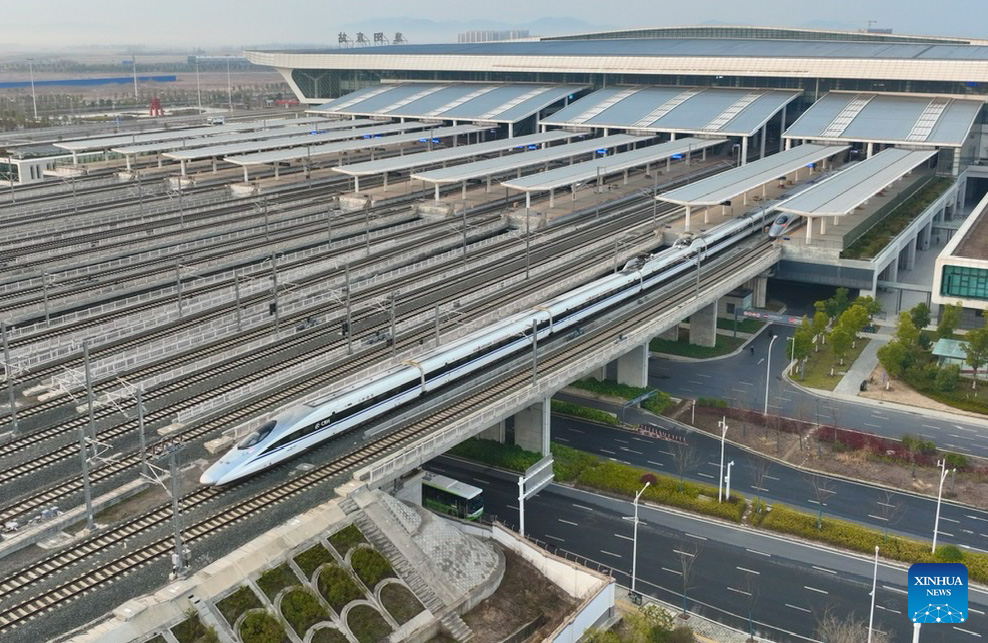
This aerial photo shows a bullet train departing from Xiangyang East Railway Station in Xiangyang, central China's Hubei Province, Feb. 15, 2023.
The 40-day Spring Festival travel rush, a mass migration marking the celebration of the Chinese New Year, officially ended on Wednesday, with more than 1.5 billion trips made by rail, highway, water and civil aviation. (Photo by Yang Dong/Xinhua)
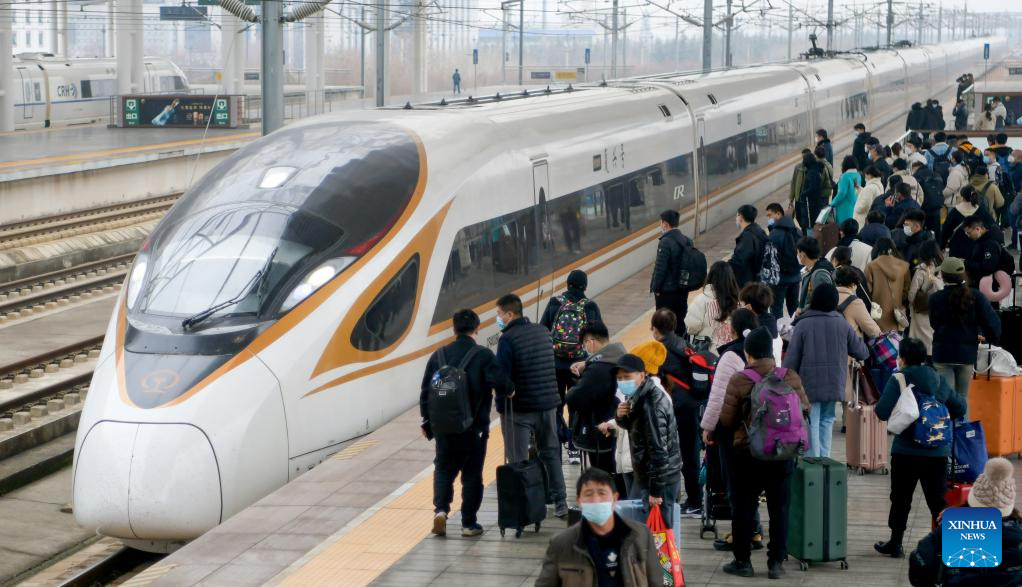
Passengers wait to board a train at Luoyang Longmen Railway Station in Luoyang, central China's Henan Province, Feb. 15, 2023.
The 40-day Spring Festival travel rush, a mass migration marking the celebration of the Chinese New Year, officially ended on Wednesday, with more than 1.5 billion trips made by rail, highway, water and civil aviation. (Photo by Zhang Yixi/Xinhua)
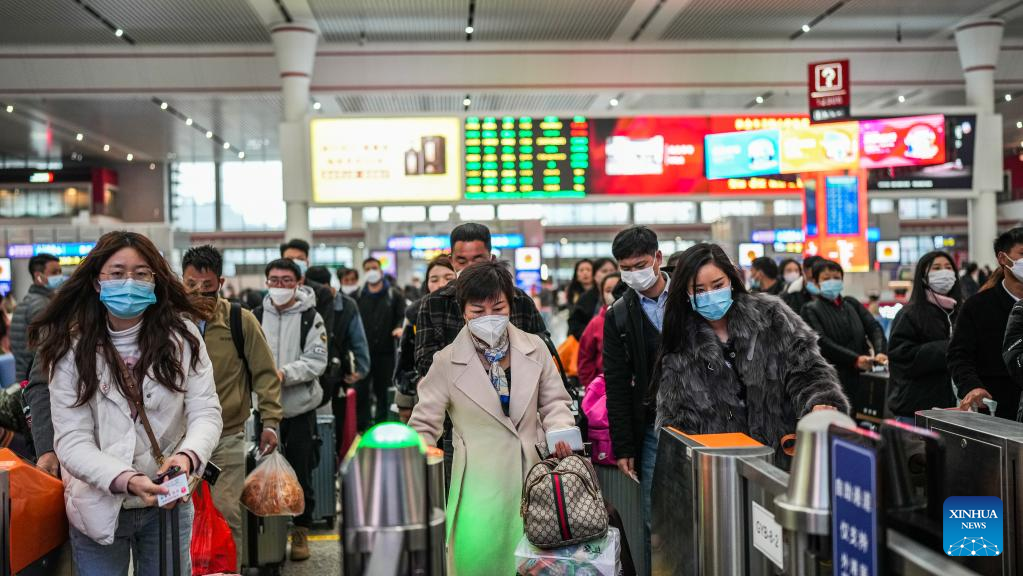
Passengers pass the ticket gate at Guiyang North Railway Station in Guiyang, capital of southwest China's Guizhou Province, Feb. 15, 2023. The 40-day Spring Festival travel rush, a mass migration marking the celebration of the Chinese New Year, officially ended on Wednesday, with more than 1.5 billion trips made by rail, highway, water and civil aviation. (Xinhua/Tao Liang)
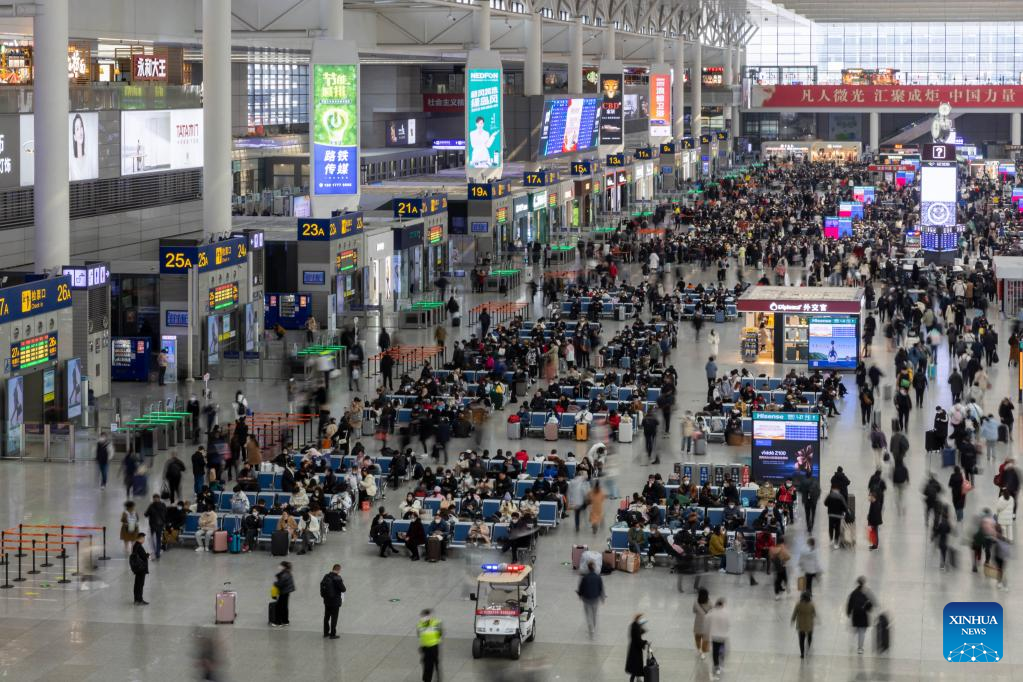
This photo taken on Feb. 15, 2023 shows a view of the crowded Shanghai Hongqiao Railway Station in east China's Shanghai. The 40-day Spring Festival travel rush, a mass migration marking the celebration of the Chinese New Year, officially ended on Wednesday, with more than 1.5 billion trips made by rail, highway, water and civil aviation. (Xinhua/Wang Xiang)
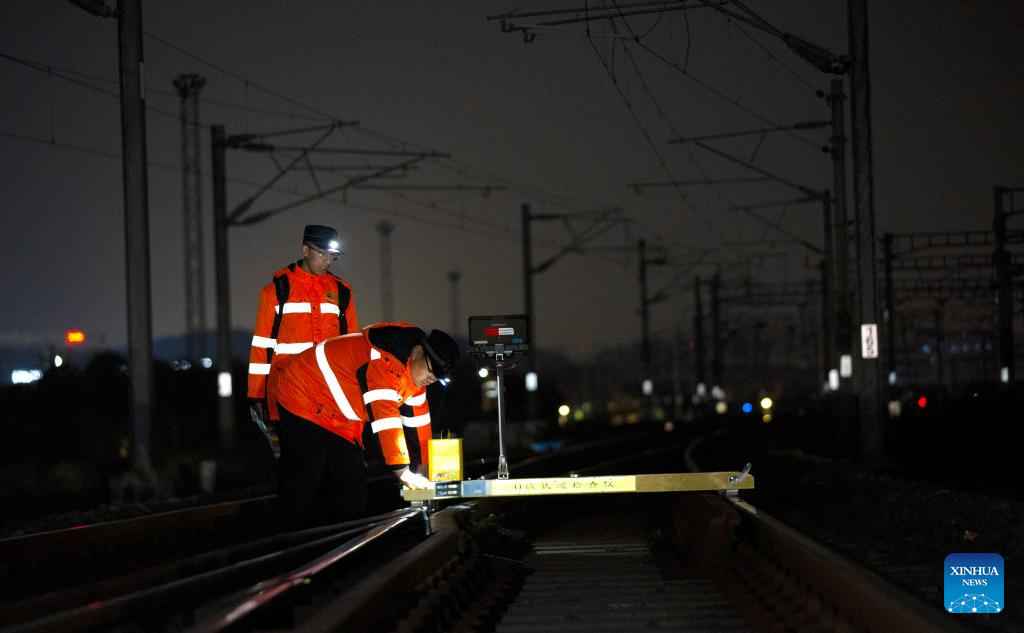
Maintenance workers under the China Railway Shanghai Group Co., Ltd. inspect railway tracks at Nanjing South Railway Station in Nanjing, east China's Jiangsu Province, Feb. 15, 2023. The 40-day Spring Festival travel rush, a mass migration marking the celebration of the Chinese New Year, officially ended on Wednesday, with more than 1.5 billion trips made by rail, highway, water and civil aviation. (Photo by Yan Chenhao/Xinhua)
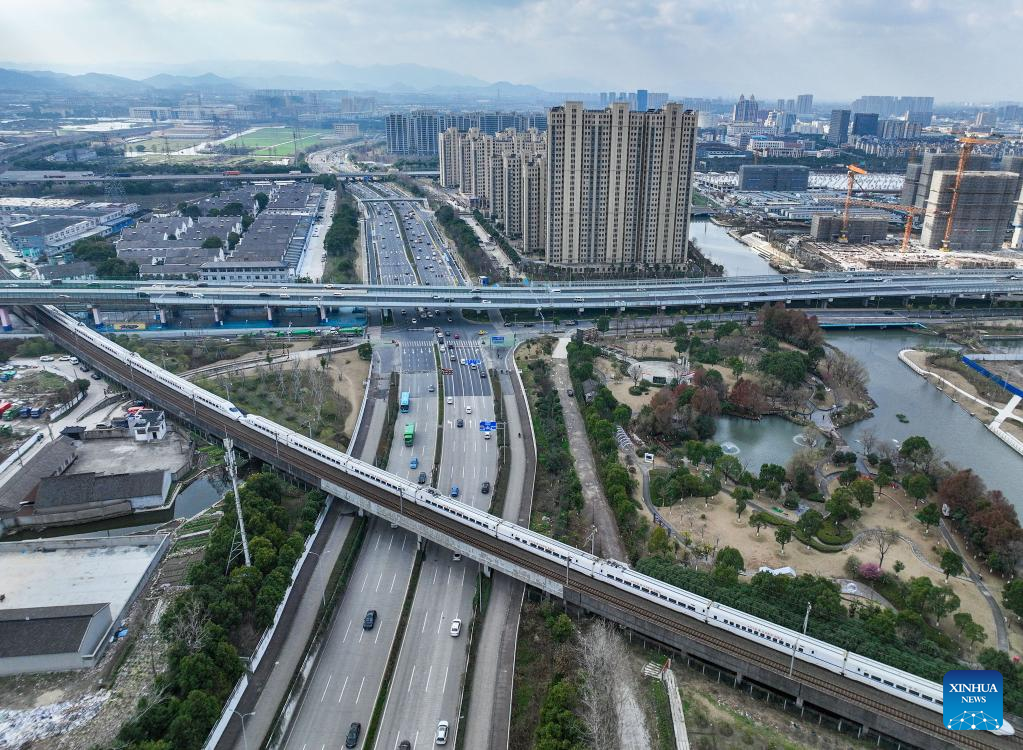
This aerial photo taken on Feb. 15, 2023 shows a bullet train running in Yinzhou District of Ningbo City, east China's Zhejiang Province. The 40-day Spring Festival travel rush, a mass migration marking the celebration of the Chinese New Year, officially ended on Wednesday, with more than 1.5 billion trips made by rail, highway, water and civil aviation. (Photo by Hu Xuejun/Xinhua)
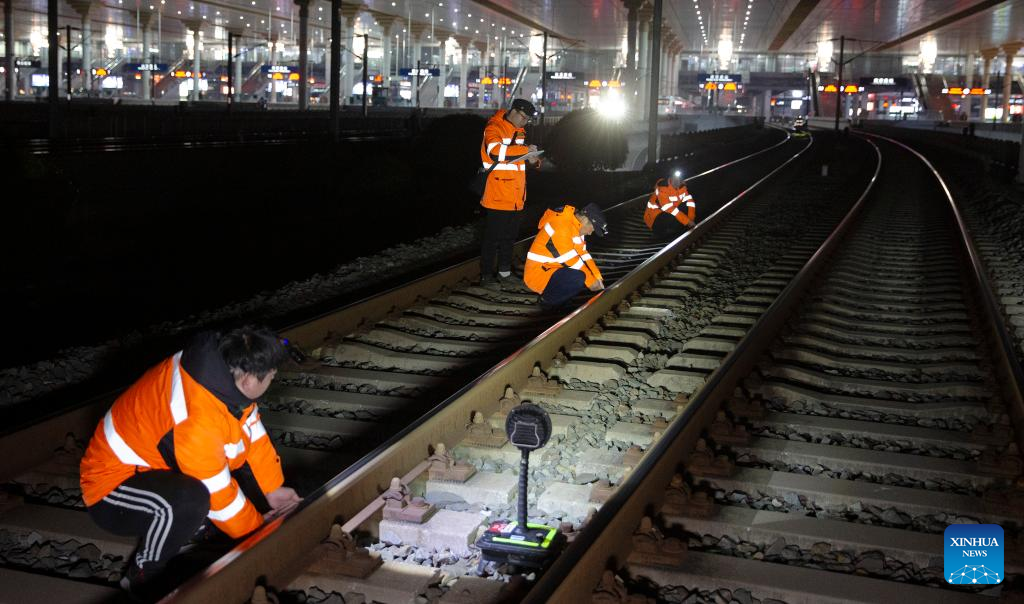
Maintenance workers under the China Railway Shanghai Group Co., Ltd. inspect railway tracks at Nanjing South Railway Station in Nanjing, east China's Jiangsu Province, Feb. 15, 2023. The 40-day Spring Festival travel rush, a mass migration marking the celebration of the Chinese New Year, officially ended on Wednesday, with more than 1.5 billion trips made by rail, highway, water and civil aviation. (Photo by Jing Zongxing/Xinhua)
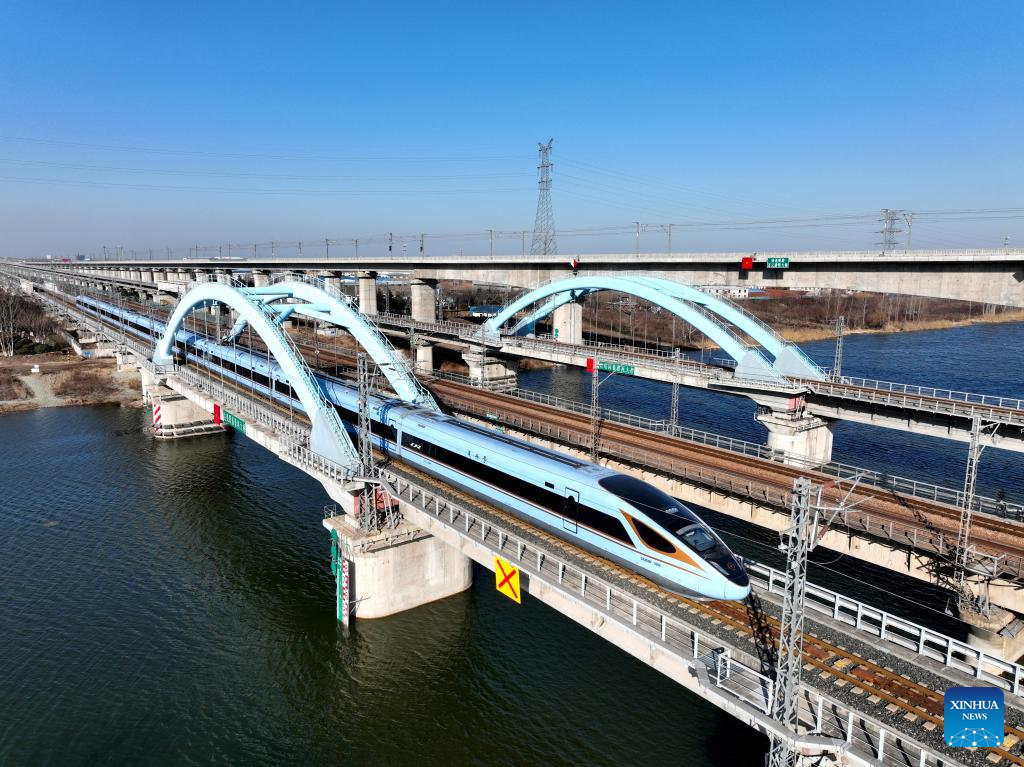
This aerial photo taken on Feb. 15, 2023 shows a bullet train running on a railway bridge in Haizhou District of Lianyungang City, east China's Jiangsu Province. The 40-day Spring Festival travel rush, a mass migration marking the celebration of the Chinese New Year, officially ended on Wednesday, with more than 1.5 billion trips made by rail, highway, water and civil aviation. (Photo by Wang Chun/Xinhua)
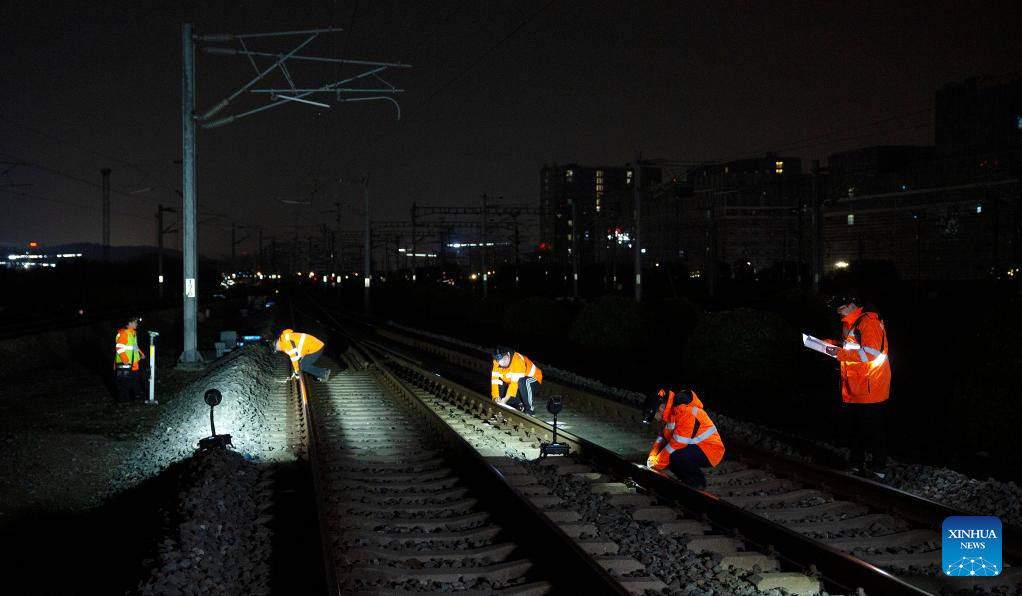
Maintenance workers under the China Railway Shanghai Group Co., Ltd. inspect railway tracks at Nanjing South Railway Station in Nanjing, east China's Jiangsu Province, Feb. 15, 2023. The 40-day Spring Festival travel rush, a mass migration marking the celebration of the Chinese New Year, officially ended on Wednesday, with more than 1.5 billion trips made by rail, highway, water and civil aviation. (Xinhua/Li Yuze)
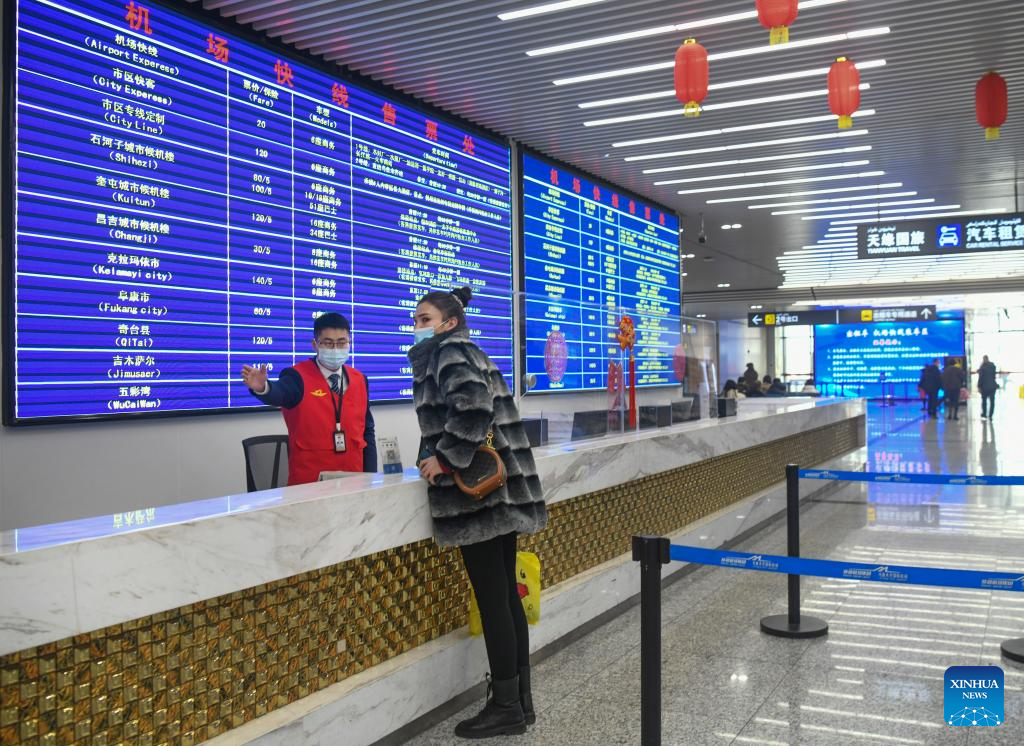
A passenger asks for information about airport express at the airport transport hub of Urumqi Diwopu International Airport in Urumqi, northwest China's Xinjiang Uygur Autonomous Region, Feb. 15, 2023. The 40-day Spring Festival travel rush, a mass migration marking the celebration of the Chinese New Year, officially ended on Wednesday, with more than 1.5 billion trips made by rail, highway, water and civil aviation. (Xinhua/Wang Fei)
点击右上角![]() 微信好友
微信好友
 朋友圈
朋友圈

请使用浏览器分享功能进行分享
